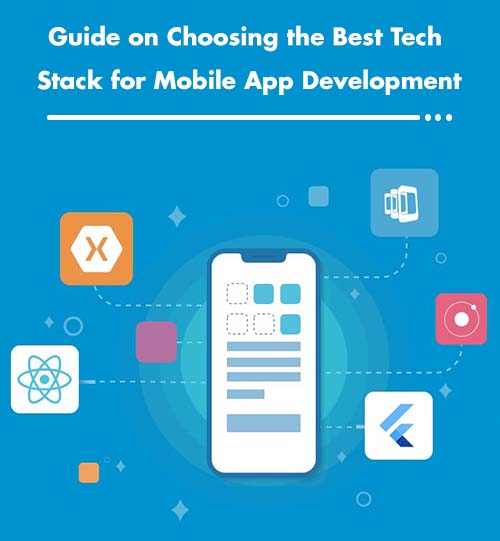React Native, a JavaScript-based framework, gained mainstream adoption when Facebook open-sourced it in 2015. Now, the framework is widely used to develop high-quality, native-like, and powerful cross-platform apps, thanks to its various benefits.
Since React Native has become a sought-after platform for creating futuristic applications, many React Native app developers want to get insights into the best code editors or IDEs available for this framework. So, here we have shed light on the best editors that can contribute to developing high-performance applications.
Best React Native Editors for App Development
Nuclide
Nuclide is one of the best IDEs for building React Native apps as it comes with inbuilt support for the React Native framework and JavaScript. Facebook launched this editor to streamline the mobile app development process and overcome the limitations of other IDEs like Eclipse and AppCode.
Besides, it offers all the features of Flow, including Code Diagnostics and Autocomplete, which is indeed a significant benefit for React Native app developers who have to deal with apps primarily written in Flow.
Key features of Nuclide are:
- Flow Support
- Debugging
- Remote Development
- Hack Language Support
Atom
Atom is an open-source editor that works across multiple operating systems, including Windows, Mac, and Linux. Developers widely use it for almost all major technologies. Since this editor has a large active community, a lot of its plugins or enhancements allow React Native app developers to build high-quality apps. Additionally, hacking the core and writing packages is easy with Atom, thanks to HTML, CSS, and JavaScript.
Key Features of Atom are:
- Autocompletion
- File System Browser
- Cross-Platform Editing
- Multiple Panes
- Built-In Package Manager
- Find and Replace
Sublime Text
Sublime has been an all-time favorite editor for mobile app developers as it offers a lot of themes and packages. Since its inception in 2008, the Sublime Text has undergone a lot of iterations so far, which makes it a seasoned and sophisticated player in the tech market.
Key Features of Sublime Text are:
- Multiple Selections
- Command Palette
- Split Editing
- Goto Anything
- Customize Anything
- Distraction Free Mode
- Instant Project Switch
- Cross-Platform Support
Visual Studio Code
Visual Studio Code is a powerful source editor introduced by Microsoft for Windows, Mac, and Linux. Since the editor comes with inbuilt support of JavaScript and TypeScript, it has gained a lot of traction among React Native app developers.
Key Features of Visual Studio Code are:
- Git Commands Built-In
- Code Debugging
- Extensible and Customizable
- Easy Deployment
Vim Editor
Vim is a highly configurable, open-source text editor that facilitates creating and changing any kind of text. The editor is rock stable and has various plugins, including vim-jsx, vim-react-snippets, and vim-babel.
Key Features of Vim Editor are:
- Integration with Multiple Tools
- Powerful Search and Replace
- Persistent, Multi-Level Undo Tree
- Extensive Plugin System
- Support For Ample Programming Languages and File Formats
Spacemacs Editor
Spacemacs is a community-driven, open-source Emacs distribution. The editor is based on layers, which facilitates adding and excluding pre-defined features.
Key Features of Spacemacs are:
- Great Documentation
- Command Line Editor
- Highly Customizable
- Simple Query System to Find Available Packages and Layers Quickly
- Mnemonic Prefixes to Organize Key Binding Properly
GNU Emacs Editor
GNU Emacs is a customizable, extensible, free/libre, and self-documenting real-time editor that comes free under GPL License. This editor is one of the powerful text editors today.
Key Features of GNU Emacs are:
- Full Unicode Support For Almost All Human Scripts
- A Packaging System For Downloading and Installing Extensions
- Content-Aware Editing Modes
- Highly Customizable
- Complete Built-In Documentation
- An Ecosystem of Functionalities like text editing, debugger interfacem project planner, and more.
Deco
Deco is an all-in-one IDE for creating React Native apps that can be downloaded and used without any environment setup. It improves React Native app development workflow by allowing developers to edit UI in real-time and focus on component reuse.
Key Features of Deco are:
- Real-Time Tweaking
- Component Search and Insert
- New File Scaffolds
WebStorm
WebStorm is a highly configurable, open-source IDE that has a vibrant plugin ecosystem. It offers advanced support for JSX and React, and provides core coding assistance for developing React Native apps.
Key Features of WebStorm are:
- Version Control System
- Intelligent Coding Assistance
- Built-In Terminal
- Support For the Latest Technologies
- Seamless Tool Integration
- Debugging, Tracing, and Testing
Final Words
These are the top code editors that facilitate the React Native app development process because of its powerful features. You can consult with an experienced React Native app development company to choose the best editor or IDE for your project. They will meticulously understand your requirements and objectives to suggest you an editor that suits the best to your project.










